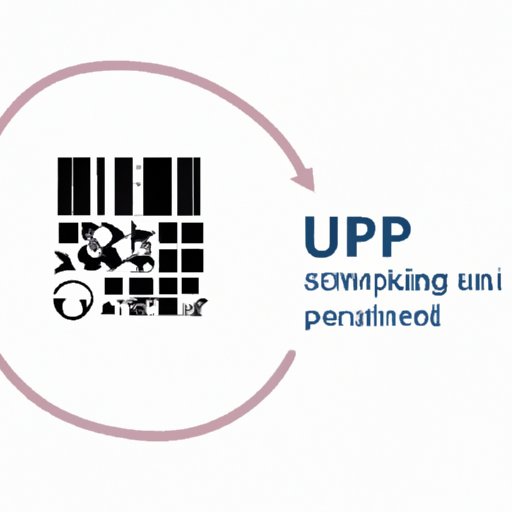I. Introduction
Universal Product Code (UPC) is a fundamental part of commerce and an essential tool for businesses to improve their retail operations. Every product in a store, whether it’s a grocery or a piece of electronic equipment, has a unique UPC code that enables efficient and accurate inventory tracking and management. In this article, we’ll explore everything you need to know about UPC codes, from their definition and significance to their history, pros and cons, and emerging technologies.
II. All You Need to Know About UPCs: A Guide for Beginners
A UPC code comprises a series of black and white vertical bars and spaces that can be scanned by a barcode reader or digital scanner. It consists of two major components: the first six digits identify the manufacturer and the subsequent digits signify the product. UPC codes emerged as a breakthrough technology that revolutionized retail operations and inventory management practices.
III. Why Every Business Needs a UPC Code and How to Get One
By implementing a UPC code system, businesses can streamline operations, reduce errors, improve efficiency, and enhance their customer experience. The process of getting a UPC code involves registering with GS1, the international organization responsible for issuing UPC codes, and paying an annual fee. The cost varies based on the number of products being registered. Besides GS1, some resellers also provide UPCs, but the authenticity of these codes might not be guaranteed, and they may not be globally recognized.

IV. The History and Evolution of UPCs: From Barcodes to Digital Scanning
The UPC code system was developed in the late 1960s by George Laurer, who aimed to create a universal product identification system that could replace the conventional pricing methods. Since then, UPCs have evolved significantly, with technological advancements leading to the adoption of digital scanning and radio frequencies identification (RFID) tags. UPCs are now key components of supply chain management, and they account for billions of scans every day worldwide.
V. The Pros and Cons of UPC Codes for Small Business Owners
UPCs have numerous benefits for small businesses, including improved inventory management, better accuracy and efficiency, and increased sales opportunities. However, the cost of obtaining UPCs and potential conflicts with big retailers are among the downsides. Small businesses can benefit from UPC codes by implementing efficient inventory management systems, integrating with third-party vendors that offer UPCs, and leveraging the benefits of online marketplaces.
VI. How UPCs Can Benefit Your Retail Business and Boost Sales
Implementing UPCs can benefit a retail business by enhancing efficiency and accuracy and enabling faster and more precise inventory management. Customers also benefit from UPCs since they provide clear and consistent product information, which can lead to improved satisfaction and increased sales. Furthermore, UPCs play a crucial role in reducing theft and fraud, thus providing a secure shopping environment.
VII. Common Misconceptions About UPCs: Busting Myths and Clarifying Facts
There are several misconceptions about UPCs, such as the belief that they contain personal information about the product or the consumer, or that they represent pricing information. However, a UPC code only contains basic information essential for supply chain management, and pricing varies based on many factors such as demand, supply, and marketing decisions. Misunderstandings about UPCs can lead to mismanagement and confusion, so it’s important to get the facts straight.
VIII. The Future of UPCs: Emerging Technologies and Trends to Watch Out For
The rapid growth of e-commerce and online marketplaces has increased the demand for more efficient UPC systems, such as RFID tags and QR codes. These technologies enable faster and more accurate scanning and tracking, leading to improved inventory management and enhanced customer experience. Retailers must stay informed about the latest trends and emerging technologies concerning UPCs to ensure their businesses remain competitive and up-to-date.
IX. Conclusion
A UPC code system is a fundamental tool for any business aiming to improve their retail operations, efficiency, and overall customer experience. By understanding the significance, structure, benefits, and emerging trends of UPCs, businesses can stay ahead of the curve and reap the benefits of this essential technology. We encourage all business owners to consider adopting a UPC code system and leverage its benefits to grow their businesses and enhance customer satisfaction.
